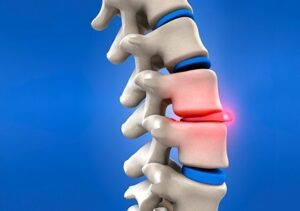Do inversion tables really work for lower back pain?
Hanging by one’s ankles does remove the force of gravity from the discs in the lower back, but it also places a lot of undo strain on the knees, ankles and other joints in the process. Generally, in my opinion, the risks outweigh the benefits for most people with lower back disc problems.
Instead, I recommend the BackHealth™ exerciser for people with lower back disc problems. The BackHealth™’s exercise program aggressively stretches the spine, especially the lumbar region where most of daily stress accumulates. In addition to actually stretching the lumbar region of the spine, BackHealth™’s program builds muscle strength as it re-establishes correct lift dynamics.
Starting from the bottom up, correct lift dynamics begin in the calf muscles, include the hamstring groups, the gluteal muscles, and end up with the spinal erector groups and the interspinalis muscles. Neck and shoulder muscles also collaborate in a proper lift dynamic. Inversion accomplishes none of these key remedies. Re-establishment of this dynamic cannot be omitted from real spinal rehabilitation.
Regardless of how your back pain is treated, whether it involves surgery or chiropractic care, you will never have a fully functional back until and unless you build your own. No one can do it for you.


Dr. Weisel, You are right stating that the risks outweigh the benefits. There may be some short term relief from but inversion offers no lasting benefits. When asked about inversion tables by my patients I also discuss that the blood vessels in the brain and eyess are much more delicate than the vessels in the lower body and legs. When you hang upside down the entire blood column is now on the small vessels in their brain and eyes. I also show them that the ankle, knee and hip joints are compresson joints not traction therefore are not designed to have your body weight pulling on them. I will also ask them if they have ever heard of any doctor or hospital anywhere prescibing this kind of treatment or ever seen it done other than in a medieval dungeon movie? The answer is always no.
I have a patient that insisted on using an inversion chair against my wishes. Little did he know that he had a small berry aneurysm. This ruptured causing him to have a stroke at 35 years old. As you can imagine I am serious about discouraging people from using these tables. I have even told patients that I would not treat them if they use one.
Dr. Chris Carraway
great post, thanks for sharing